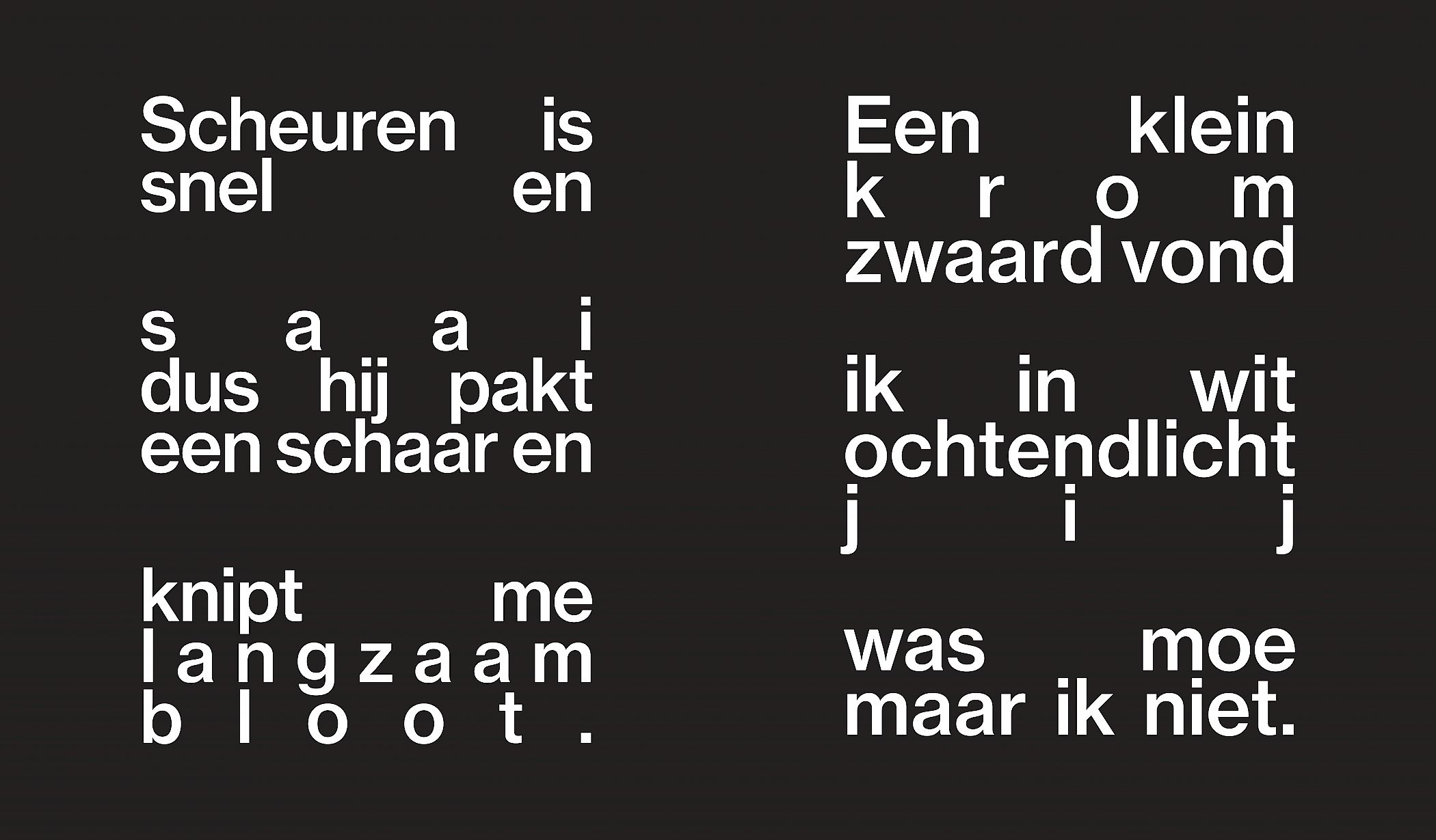Merel Boers and Roosje Klap teamed up for this edition of ‘Wat nu, Koetsier?’. Originally, a 'hokku' was a scene setter, the opening stanza of a longer poem created by several people together, in a social setting. The enigmatic first verse evolved into something of its own, a solo-act baptized 'haiku'. In the West, people can be obsessed with haiku rules and regulations. Modern Japanese poets experiment more freely with the seventeen syllables.
These two haiku are un-traditional in the sense that they do not set a scene or capture a moment, but suggest the whole plot. For their subject matter one might even consider them to be more 'senryu' than 'haiku' – but let’s not delve into semantics here.
However, these two verses do connect to tradition in their echoing and contrasting consonants and vowels. Classic 'hokku' are strings of linked sounds, written in a single (vertical) line: 'yanagi chire shimizu kare ishi tokoro dokoro' (Yosa Buson, 1742).
This is the result of playing with these predilections, implicit and/or explicit ideas about what we see, or rather: what do we want to see? We went toying around with the free range of possibilities and ended up with two haiku especially for the dark and cozy days of winter. Suggestive words that build an automatic image in the eye of the beholder - a small dark witty discovery in the columns of the newspaper, something to giggle about.
Sources:
Studio Joost Grootens
02.12.2016
Navid Nuur
09.12.2016
Femke Herregraven
16.12.2016
